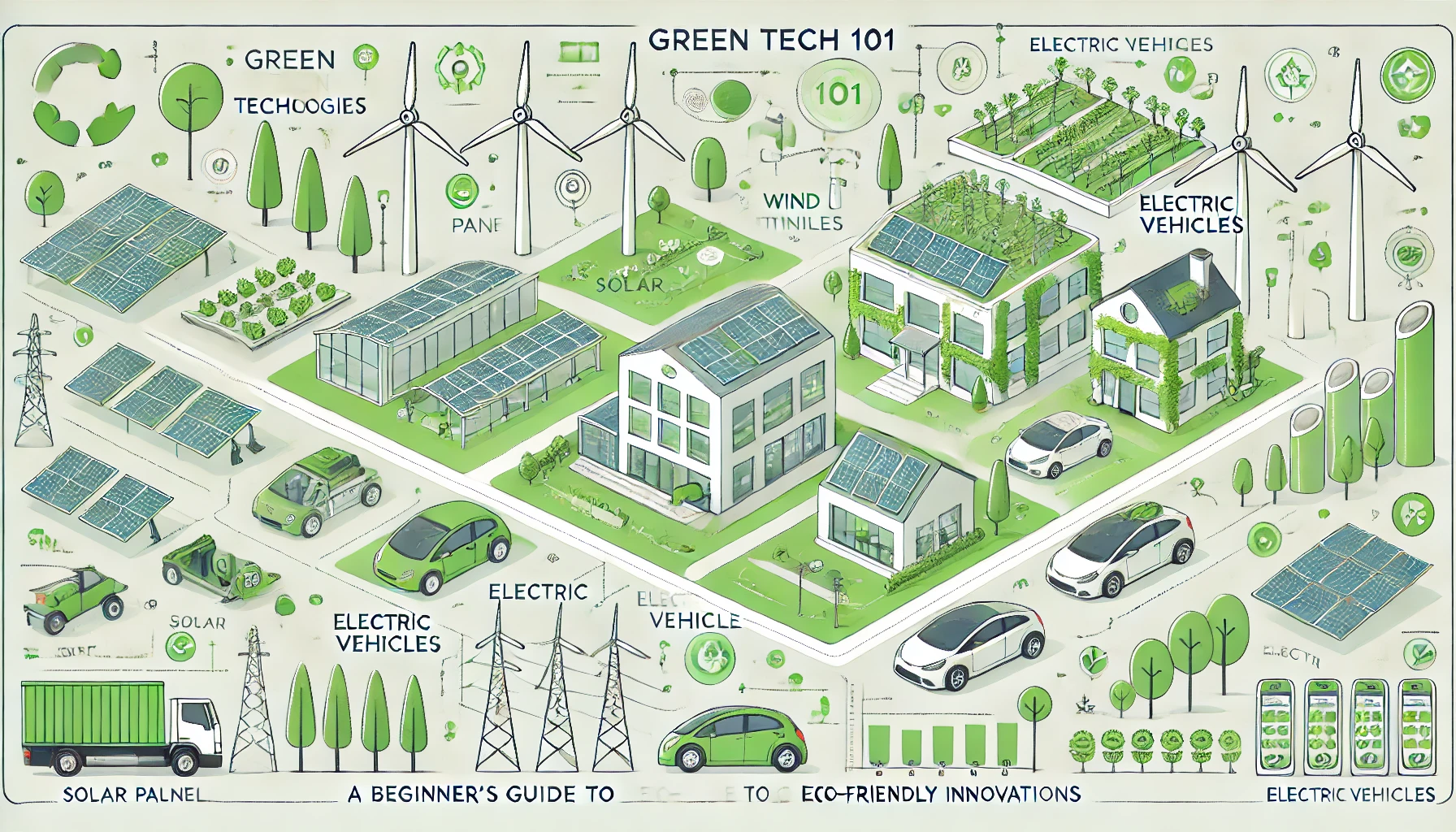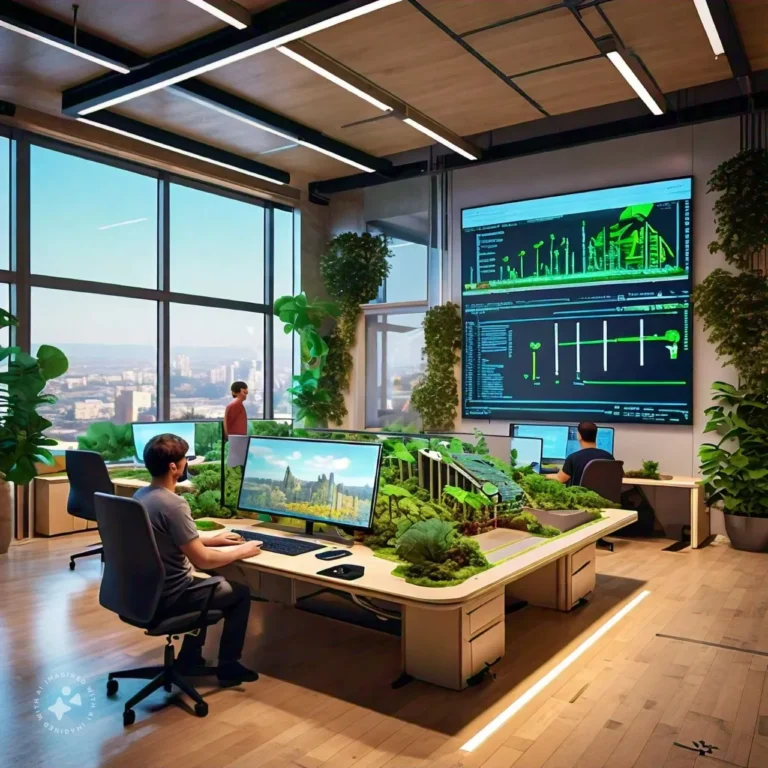Green Tech 101: A Beginner’s Guide to Eco-Friendly Innovations
The planet is heating up, the ice caps are melting, and the global population is growing. If these issues sound familiar, then you’ve probably heard about the importance of adopting green technology. But what exactly does “green tech” mean, and how can it help us create a more sustainable future? If you’re a beginner in the world of eco-friendly innovations, don’t worry—you’re not alone. This guide will break it all down in a simple, easy-to-understand way so you can get up to speed on the incredible power of green technology. Let’s dive in!
What Is Green Tech?
Green technology, or “green tech,” refers to the development and use of products, equipment, and systems that conserve natural resources and minimize environmental harm. It’s all about doing more with less. Think of it as the intersection of technology and environmental responsibility—two powerful forces coming together to save the planet.
Why Is Green Technology Important?
So why does green tech matter? The short answer: it’s essential for our survival. As the world continues to face the impact of climate change, pollution, and depleting resources, green technology offers solutions to slow down or reverse the damage. It provides cleaner energy, reduces waste, and helps make our daily lives more sustainable.
The Rise of Renewable Energy
One of the most talked-about areas of green tech is renewable energy. Traditional energy sources like coal, oil, and natural gas are finite and damaging to the environment. In contrast, renewable energy harnesses natural, replenishable sources like sunlight, wind, and water.
Solar Power: Harnessing the Sun
Solar power is one of the most accessible forms of renewable energy. By using solar panels, we can capture sunlight and convert it into electricity for homes, businesses, and even cities. It’s clean, affordable, and virtually limitless. Who doesn’t love the idea of getting free energy from the sun?
Wind Power: The Power of the Breeze
Ever noticed those large wind turbines in the middle of open fields? They’re not just for show. Wind power captures the kinetic energy of the wind and converts it into electricity. It’s a powerful and clean alternative to fossil fuels. And, the best part? The wind will never run out.
Hydropower: Water as a Green Energy Source
Hydropower uses the movement of water to generate electricity. Dams and rivers are typically involved in this process. Hydropower is another fantastic renewable source, although it requires specific environments, like large bodies of water, to be effective.
Energy Efficiency: Doing More With Less
Green tech isn’t just about finding new sources of energy. It’s also about using the energy we have more efficiently. Energy-efficient appliances, LED lighting, and smart thermostats all help reduce energy consumption, which leads to fewer carbon emissions and lower energy bills.
Electric Vehicles: Driving Towards a Cleaner Future

Cars have long been a major contributor to pollution. Enter electric vehicles (EVs)—a green tech innovation that’s driving us toward a cleaner future. EVs run on electricity rather than gasoline, which means zero emissions from the tailpipe. Plus, with improvements in battery technology, EVs are becoming more affordable and capable of longer distances.
Sustainable Building Practices
Buildings are responsible for a large portion of global energy consumption. Green technology aims to reduce this through sustainable building practices. This includes using eco-friendly materials, energy-efficient designs, and renewable energy systems like solar panels or geothermal heating.
Smart Homes: The Future of Living Green
Imagine a home that knows when to turn off the lights, adjust the thermostat, and water your plants—all without lifting a finger. That’s the power of smart homes. By using automation and intelligent systems, smart homes can reduce energy waste and make life a little easier (and greener!).
Recycling and Waste Management Innovations
Recycling has been around for decades, but green tech is pushing it to new heights. Advanced recycling technologies can now break down materials more efficiently, leading to less waste in landfills. Some innovations even allow us to recycle previously non-recyclable materials, like certain plastics and textiles.
Carbon Capture: Scrubbing the Air Clean
One of the most exciting areas of green technology is carbon capture. This process involves capturing carbon dioxide emissions from industrial sources and either storing them underground or using them in other applications, like producing fuel. While still in its early stages, carbon capture has the potential to significantly reduce the amount of CO2 in the atmosphere.
Urban Farming and Vertical Gardens
With cities growing and farmland shrinking, urban farming is becoming a popular solution. Vertical gardens, in particular, are a smart way to grow food in urban areas with limited space. By stacking plants vertically, we can grow more food using less land and water—a win-win for both cities and the planet.
Biodegradable Products: Reducing Plastic Waste
Plastic waste is a massive problem. Thankfully, green technology is helping develop biodegradable alternatives. From plant-based plastics to compostable packaging, biodegradable products break down naturally, reducing the environmental impact of traditional plastic materials.
The Role of Government and Policy in Green Tech
Of course, green technology wouldn’t get very far without support from governments and policies. Many countries are implementing green initiatives, offering incentives for renewable energy adoption, and setting regulations to reduce carbon emissions. Policy plays a huge role in driving the development and implementation of green tech.
How You Can Get Involved in Green Tech
You don’t have to be a scientist or engineer to get involved in green tech. From choosing renewable energy providers to driving an electric car, there are plenty of ways to incorporate eco-friendly innovations into your everyday life. Small steps, like using energy-efficient appliances or reducing water waste, can make a big difference over time.
The Future of Green Technology
The future of green tech is bright. As technology advances, we’ll continue to see innovations that help reduce our impact on the environment. With growing awareness and support, the possibilities are endless—from fully renewable cities to carbon-neutral industries. Green technology is more than a trend—it’s the way forward.
Conclusion
Green technology is essential for building a more sustainable future. By embracing renewable energy, adopting energy-efficient practices, and exploring new innovations like electric vehicles and smart homes, we can reduce our environmental impact and live in harmony with the planet. Whether you’re just starting to learn about green tech or already incorporating it into your life, remember that every small step counts. The journey towards a greener, cleaner world is one that we all need to be part of.
FAQs
1. What is green technology in simple terms?
Green technology refers to the use of new or improved technologies that are designed to reduce environmental harm and conserve natural resources.
2. How can I adopt green tech at home?
You can start by using energy-efficient appliances, installing solar panels, driving an electric vehicle, and reducing waste through recycling and composting.
3. Is solar energy really cost-effective?
Yes! While the initial investment in solar panels can be high, the long-term savings on energy bills and potential government incentives make it a cost-effective option.
4. Can green tech solve climate change?
Green tech is a powerful tool in the fight against climate change, but it will require widespread adoption and government policy support to make a significant impact.
5. What are some examples of green tech in transportation?
Electric vehicles, hydrogen fuel cells, and even electric bicycles are all examples of green tech innovations transforming the transportation industry.







